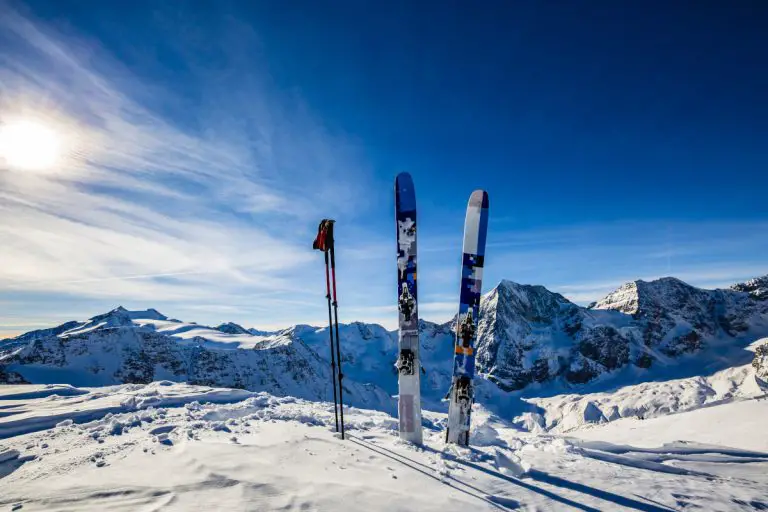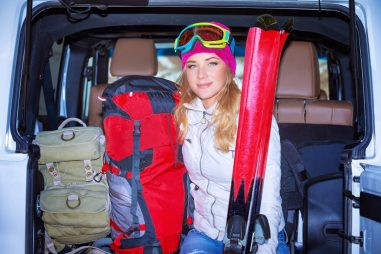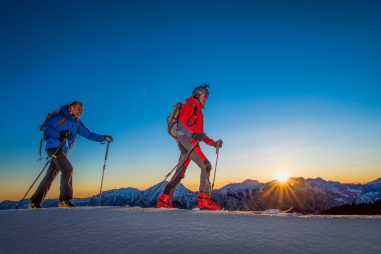Skiing comes in different forms. It may look like the ski setup is the same, but different forms have their unique requirement.
And in backcountry skiing, multiple factors determine your ski setup. Unlike groomed tracks and alpine skiing, the terrain and snow conditions vary. Together with your experience and skiing style, they all affect your choice of skis.
A ski’s weight and size affect performance. Understanding how it does makes choosing your setup much easier.
For beginners looking to get into backcountry skiing, this guide will help you choose the right setup for you.
What Are Backcountry Skis Used for?
Backcountry skis are used for offtrack skiing. With these skis, you can explore areas even outside of the resort, allowing you to ski anywhere. This includes climbing mountains and then skiing back down. Unless you’re going up the mountain using a lift or a helicopter, you won’t be able to climb with regular alpine skis.
Do You Need Special Skis for Backcountry Skiing?
In backcountry skiing, you need skis that allow you to walk on flat terrain or travel uphill. And you should still be able to ski downhill. Thus, backcountry skis are different from regular downhill skis.
This is possible when the heels of your boots can attach and detach from the ski when needed.
It detaches when you’re walking or climbing. Then you can attach it when it’s time to ski downhill.
How Are Backcountry Skis Different?
There are a few things that make backcountry skis different.
First is that you can use them to ski uphill and downhill. This is possible because of the bindings that allow your heel to attach and detach from your ski. When skiing on flat terrain or climbing, your heels are detached. But when it’s time for downhill skiing, your boots lock to your ski. This way, you can speed downhill like alpine skiing.
The second difference is its weight. They’re more lightweight than downhill skis. This makes it easier to walk or climb, conserving your energy in the process.
Lastly, you need to use skins with backcountry skins. These materials attach to the bottom of your ski and it’s what allows you to climb without sliding back down.
Can You Backcountry Ski With Regular Skis?
You can’t go backcountry skiing with regular skis. Regular skis make it extremely difficult for you to ski on flat terrain and climb. This defeats the main point of backcountry skiing.
However, you can ski downhill with regular skis. So if you’re going up to the backcountry mountains using a helicopter, you can use your regular skis.
Can Any Ski Be a Backcountry Ski?
From a technical standpoint, any ski can be set up for backcountry skiing. However, skis designed for backcountry are more lightweight and can be shorter. This way, you can climb with lesser effort compared to heavier skis.
What Kind of Backcountry Skis Do I Need?
In choosing backcountry skis, there are different variables to consider. Terrain, the type of skiing you’ll be doing, and how you ski all factor into the type of backcountry ski you need.
- Terrain: Narrow skis are better for more uphill skiing and perform better on hard snow. However, they don’t float as well on deep snow. Wider skis are more versatile and provide better float on soft snow.
- Skiing Type: If you’ll do more skinning and uphill skiing, lighter skis are recommended. Wider and heavier skis are better if you plan to do more downhill skiing since they provide more control.
- Skiing Style: Aggressive skiers need heavier skis that can handle higher speeds. If you want to stay more on top of the snow, longer skis are better. For those just looking to take it easy, choose shorter skis for more maneuverability.
How Much Are Backcountry Skis?
Investing in brand new backcountry skis isn’t going to be cheap. The price usually ranges from $700 up to $1,200 for brand-new skis. The price is often dependent on the brand, material, and technology, among other things.
If you’re in the market for used skis, you can find some as low as $400.
How to Buy Backcountry Skis
Once you know what kind of backcountry skis you need, it’s time to go out and buy a pair. It’s always better to buy a brand new ski. This way, you’re assured of its quality and performance. You don’t have to worry about wear and tear or any hidden issues from buying used.
However, since they can be quite an investment, one strategy is to buy new but last year’s model. You can get a discount for skis that may have minimal differences from the current model.
For casual backcountry skiers who prefer used skis, there are a couple of things you need to keep in mind. First, you have to make sure the skis are still in good condition. You don’t want them to break down after a couple of uses.
Second, it may be tough to find the ski specs that you’re looking for. If you’re not in a rush, be patient in your search.
How Are Backcountry Skis Measured?
Backcountry skis are measured by their length and width. Skis come in different sizes and thus have different features.
For the length, skis are measured from end to end. Shorter skis are much better if you’ll be doing more uphill skiing. They’re more maneuverable but not as fast.
Longer skis are made for speed. If you’ll be doing more downhill skiing, these will provide more stability at high speeds.
What Size Backcountry Skis Do I Need?
There’s no formula that will determine what backcountry ski size you need. Choosing a ski is greatly dependent on the type of skiing you’re most comfortable with. The terrain and snow conditions also factor in. Your ski should also be proportional to your body type.
Choosing the right size is critical so you can get what you’re expecting from your ski. This way, you can perform at your best and have fun.
What Length Should My Backcountry Skis Be?
Height and your skiing ability are the most important factors that affect ski length.
If you’re an advanced and aggressive skier and speed is a priority, then choose longer skis. They’re more stable at higher speeds.
If you’re laid back and concerned about moving around objects, shorter skis are better.
How Wide Should My Backcountry Skis Be?
When it comes to width, snow conditions dictate its size. Narrow skis are best for high-speed descents. Meanwhile, wider skis are ideal for stability and a wider range of snow conditions.
The ski width is measured at the waist or the ski’s midpoint. Here are the recommended widths for different snow conditions:
- 95mm (3.74 in) or Less: Best for hard snow and longer tours. More efficient for uphill travel.
- 95mm to 105 mm (3.74 in to 4.13 in): Best for various snow conditions, even in soft snow. Provides all-around performance
- 105 mm (4.13 in) or Wider: Provides the best float for deep snow but is less maneuverable.
How Do You Determine Backcountry Ski Length?
If you’re one to ski at your own pace, the ski length should be 5 cm to 10 cm (1.96 to 3.93 in) less than your height. This is good enough for various snow conditions. It’s also the most comfortable without sacrificing much on performance.
But if you’re a more advanced skier, ski length should be the same as your height or longer by 5 cm (1.96 in). This gives you more speed if you want to go faster. The added weight provides stability, especially at high speeds.
How Much Do Backcountry Skis Weigh?
Because skis come in various sizes, their weight also varies. Longer skis are on the heavier side, with shorter skis weighing less.
How much a ski weighs factors into its performance. They typically weigh from 5 to 8 lbs. (2.3 to 3.6 kg).
Longer skis made for skiing at high speeds are heavier because they need to give you a more stable ride. Going downhill real fast on light skis can cause you to lose balance and get injured.
Shorter and lighter skis are best for more control at a much slower pace. They’re also better for climbs since they require less energy to carry.
What Are the Lightest Backcountry Skis?
The lightest backcountry skis are also often called ultralight skis. These skis usually weigh around 5 lbs. (2.3 kg) and are great for long backcountry ski trips. Their lightweight construction gives you an easy glide, especially when going uphill. They’re also easier to carry, which will put less strain on your back.
Various brands offer lightweight skis. But note that they’re not designed the same way despite being in the lightweight category. They’ll perform differently based on the materials used, width, and length.
How Heavy Should a Backcountry Ski Be?
Skis come in various sizes and weights. Choosing the right one depends on different factors. Your body size, the snow conditions, and your skiing style all need to be considered.
Lighter and shorter skis are best for the following:
- Longer tours that have more uphill travel.
- Skiers who weigh less than the average for their height.
- Beginner to intermediate skiers.
- Making quick, short turns.
- Skiing at slower speeds.
Heavier and longer skis are best for the following:
- Fast and aggressive skiing, especially downhill.
- Skiers who weigh more than the average for their height.
- More stability at high speeds.
What Is a Good Weight for Backcountry Skis?
If you want the right balance of weight and performance downhill, get skis that weigh between 5 lbs. to 7 lbs (2.3 to 3.2 kg). Within this range, skis are light enough to make it easier to go uphill and are heavy enough for you to go fast downhill.
However, you should still take into consideration your skill level and skiing style. And before making a purchase, make sure to research the ski’s design and performance.




